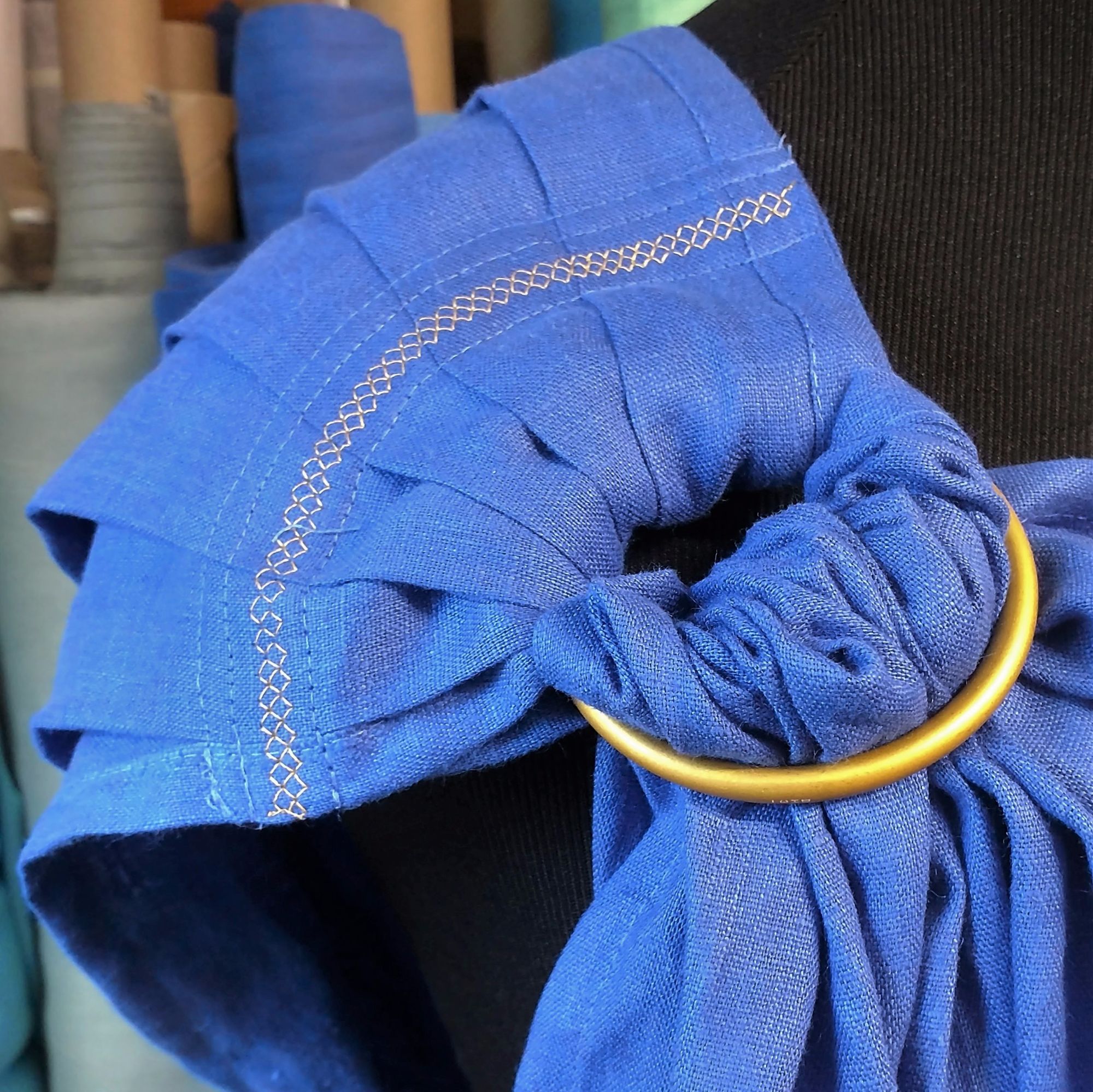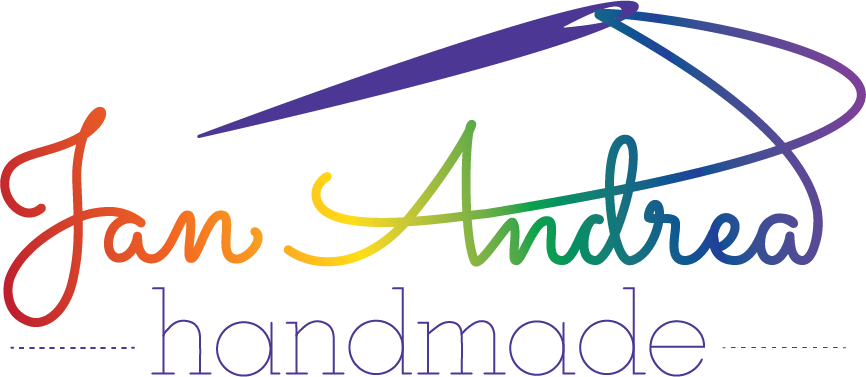there's more to ring slings than a gathered shoulder! Shoulder styles
Most of the slings currently on the market use what's known as a "gathered shoulder". It's the simplest to sew, and it fits a variety of people, but there are other ways to sew a sling. I offer three shoulder style choices,
but the majority of slings I sew are with Signature pleats -- check out the Pros and Cons to find out why!

Signature pleats
While the number of pleats varies with the fabric type to maximize comfort, overlapped pleats give even support across your whole shoulder and back, allowing the fabric to spread naturally along carefully stitched lines.

"Retro" pleats
Named for the way I sewed pleats prior to about 2007, larger pleats give the same support as signature pleats, but with a wider spread over the shoulder and upper back. Great if you like to wear your rings high, or if you have
more rounded shoulders.

Eesti hybrid
Created and named by Karen Hoppis, who licenses the style to SBP. Small pleats on each side give some structure, while the gathered center section allows flexibility in the fabric width across your shoulder and back.
What works best for you? Pros and cons
Pros:
- Easy to put on and go: structure allows the shoulder to be positioned correctly, quickly, and without fuss.
- Pleats keep the fabric narrower at the rings, but spread pressure out evenly across your back, widening as much as you need behind the shoulder.
- Works on both left and right shoulders.
- Good for: most builds, from pointed to rounded shoulders.
Cons:
- Some wearers find pleats too structured, preferring to overlap fabric more or less than the pleats do.
- Can't be scrunched smaller (though wearing the rings higher reduces the amount the fabric spreads out)S.
Pros:
- Fewer, wider pleats makes the shoulder wider where it leaves the rings, and opens out faster than signature pleats.
- May be preferable for plus-sized wearers, as it fits a more rounded shoulder (this was my preference -- I have worn between an XL and 3XL in the last 16 years, and preferred a wider shoulder like this when my kids were
babies).
- Works on both left and right shoulders.
- Also works for petite wearers who like to wear their rings high, as the wider spread allows a high ring while still providing generous support over the back.
Cons:
- Can be overwhelming on narrow or pointed shoulders, spreading too far down the upper arm, if rings are worn too low.
- As with signature pleats, can't be scrunched smaller.
Pros:
- Good compromise between pleated and gathered -- small pleats on both sides take up some of the width, partially restricting how far the fabric spreads out the fabric spreads over the upper arm.
- Once you find your "sweet spot", comfortable on most body types.
- Gathered section allows the wearer to customize the width and amount that the shoulder spreads out.
- Works on both left and right shoulders.
Cons:
- Can take a little longer to put on than pleats -- if it's not arranged when putting it on, the gathered section allows the fabric to spread far down the upper arm, limiting range of motion and potentially causing discomfort.
- Decorative stitching isn't available with the Eesti shoulder, because the density of decorative stitches keeps the gathered portion from being scrunchable.
(I haven't tested my sewing with a gathered shoulder, so I'm not able to sew slings using a gathered style.)
Pros:
- Easy to sew, making it popular among sellers.
- Once you find the "sweet spot", comfortable on most body types.
- Gathers allow the wearer to customize the width and amount that the fabric spreads out over the shoulder.
- Works on both left and right shoulders.
Cons:
- Takes longer to put on than more structured styles -- without careful arranging when putting it on, the fabric can spread far down the upper arm, limiting range of motion and potentially causing discomfort.
- If the fabric spreads too far down the arm, it's difficult to get the lower edge of the sling snug enough, leading to issues while wearing. This can be fixed with practice, but the learning curve is steeper.

